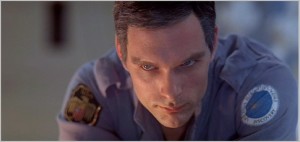As a high schooler in Pennsylvania, the news of the Sandusky scandal and Joe Paterno’s removal as head coach for Penn State reverberated in my town. At the time, I actually didn’t know very much about Penn State, and I did not really suspect that I would eventually become a part of the Penn State community. In fact, news of the scandal did more to dissuade me from considering Penn State than anything else. (Of course, my views on this matter have significantly changed, and I am very happy as a student here). But despite not having a previous connection to Penn State, the more I learned about Paterno, the more I was intrigued. Here was a man celebrated by his community, even deified, who was reduced to tarnish and ruin (almost literally) overnight. It seemed almost Shakespearean. Paterno was responsible for so much good at Penn State: a wonderful, brand new library, an athletic program that valued education above all else, and a culture of utmost moral integrity. And yet, was Paterno not afflicted by some hubris surrounding his success? Here also was a living man who would allow a larger-than-life statue of himself to be erected in front of his stadium, while he was still coaching. But a huge, bronze statue does not a man make, and Paterno was not bronze- he was a human, capable of mistakes (even huge mistakes).
I wrote an article for my school newspaper about Paterno, which I have copied below. It’s a little strange to look back on a recent time in my life when Penn State was much more of an abstract than solid reality. Now that Penn State has become a large part of my identity, the story has taken on much more meaning.
(December 2011)
One can hear the resounding cries as the team enters Beaver Stadium: Joe Pa! Joe Pa! Joe Pa!
The Caesar of Happy Valley has a history of success and greatness: a narrative of triumph for a university raised from the furrows of rural isolation to the standing of a nationally recognized institution.
Hailing from the prestige of Brown University, Paterno lead Penn State to victory on the football field through his dedication and ambition, and he reaped the spoils of battle throughout a long and successful career: 409 victories, five undefeated teams, twenty four bowl wins, two national championships, and an induction into into the College Football Hall of Fame.
Paterno and his teams earned honors not simply for their knowledge and performance of the game, but for how well they performed academically, earning the title of highest player graduation rate among other top football programs. For him, the measure of the man did not take place on the field but rather in the classroom– tackling studies always came before tackling players.
And as Joe Paterno built the empire that is Penn State football, the rest of the school rejoiced in the benefits it brought to the University as a whole: national and international interest. Penn State was not just another state college in the middle of nowhere, but something far greater: a vibrant college town in a tight-knit community centered around a university ranked academically among the top fifteen public colleges in the nation.
The school’s love for Paterno was anything but subtle; a bronze statue in his likeness in front of Beaver Stadium, built in 2001, proves the allegiance and gratitude of the people.
But if Paterno was so celebrated a figure, how could his legacy have ended so abruptly?
In 2001, Paterno allegedly was alerted to the inappropriate actions of Jerry Sandusky. What exactly he knew is unclear, but what he knew he reported to the athletic director. From all reports, his action stopped there. Perhaps the crown of laurels he wore had made him deaf over the shouts of an adoring crowd, or perhaps incapable of understanding the magnitude of the accusations.
Sandusky’s alleged deceit and manipulation may have revealed Paterno’s tragic flaw– in the coach’s own words– “I should have done more.” There are matters much greater than a championship, a stadium, a university library.
The institution Joe Paterno had worked so hard to create hastily called for his removal from the throne.
Riots that then broke out shortly after Paterno’s ousting were a testament to the confusion, the anger, and ultimately the tragedy. Penn State burned with the conviction that Paterno was a man of integrity– one who could not possibly ignore such an egregious fault– and that their hero was not flawed, but rather under siege from a ruthless media. The haste with which both sides jumped to action reflects the chaos of the situation– one embroiled in misinformation, assumption, and confusion.
Perhaps Shakespeare in his tragedies reminds his readers of man’s mortality. He is a mere mortal who struggles in the face of all odds: sometimes he may stumble, even at times when the world counts on him to stand tall in the face of adversity.
The tradition, the community, and the family of academics and athletes has benefitted immensely from Joe Paterno’s reign, but what will remain of Paterno’s legacy might best be stated in the words of Shakespeare’s Marc Antony: “The evil that men do lives after them; the good is oft interred with their bones.”













